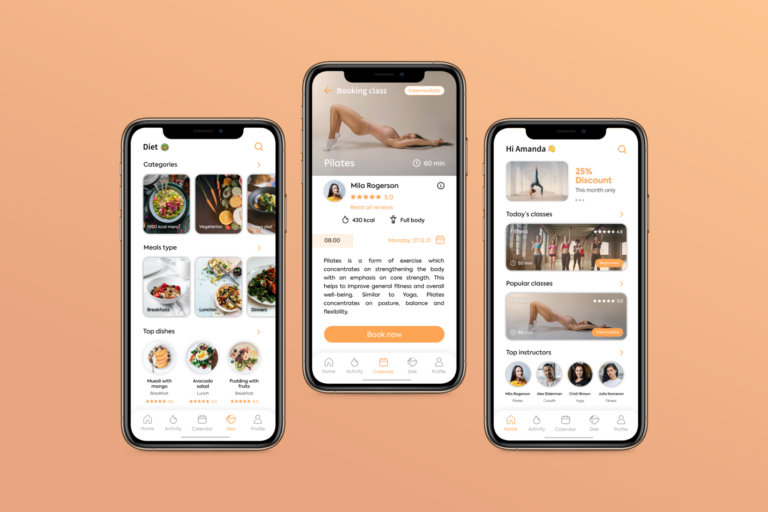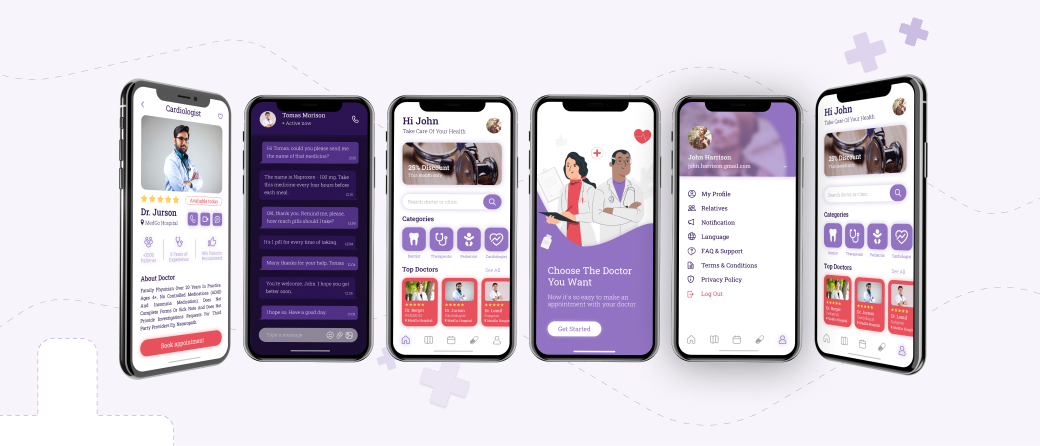Telemedicine App
development
release
Project idea
The idea was to build a telemedicine application that would allow patients to receive medical consultations online without having to visit a doctor in person.
They also wanted to allow doctors to provide online prescriptions to patients as well as order lab tests. After we went through a discovery phase and extracted the main requirements for the telehealth platform, we recommended that our client start with an MVP.
The MVP would include the following features:
- Login and onboarding
- Personal profiles
- List of available practitioners
- Online calendar and scheduling
- Video chat
- Voice chat
- Text chat
- Ability to attach files
- Search and filtering by name and specialization
- Geolocation
- Doctor profiles
- Doctor ratings and reviews
- Insurance
- Settings
- Visit history
- Payment gateway
- Subscription logic
- Push notifications
After the successful MVP launch, we planned to add:
- Access to the client’s EHR
- Online prescriptions
- Lab test ordering
- Integration with wearable devices
- Symptom assessment
- Preferred pharmacy
- Healthcare guides
Background
Our client is an entrepreneur with a medical background that decided to build a telemedicine application after the start of the COVID-19 pandemic. They wanted to find a way to provide subscription-based medical services remotely. They only had a vision and examples of other telemedicine products, so their initial request was for an IT consultation, during which we suggested technologies and gave a preliminary estimate.
The client shortlisted Mobindustry as a potential vendor, and after we suggested a few options for technologies and the MVP, they chose us to build their telemedicine mobile application from scratch.
Goals
- Analyze competitors and the target market
- Create a technical specification based on our client’s idea
- Develop the app’s UI/UX design
- Implement cybersecurity best practices
- Create an MVP
- Release the application to app markets
Challenges
The challenges of this project included:
- Lack of concrete requirements from the client
- The need for bullet-proof security and compliance with legal requirements
As you can see, the challenges were mostly technical. Let’s see how the Mobindustry team overcame these challenges and how the development process went.
Development process and results
Our first step was to interview our client and determine their requirements and business goals. Along with that, we performed market and competitor research to determine what features and integrations should be included in the MVP.
Our business analyst worked closely with the client to formulate the requirements, and we used competitor and market research to recommend the best solutions. Then, we involved our tech lead to suggest the perfect tech stack for the project. Because our client was an individual entrepreneur with limited resources, we suggested they choose Flutter for app development, as it allowed us to build a single app for both Android and iOS.
For the web part of the application, we offered our client to go with PHP paired with MongoDB and MySQL. The third-party services we planned to integrate included:
- WebRTC for video conferencing
- Stripe for mobile payments
- Google Maps for geolocation
- Socket.io for text chat
We also created an admin panel for our client to manage their customers, payments, and app content with Symfony.
For the telemedicine app’s security, we implemented:
- Two-factor authentication for both users and doctors
- Security tools that monitor unusual activity on devices
- Phone number verification
- Data encryption for text and video chats
- Data backup solution
- Secure directory for authentication
Our team that worked on this project comprised:
- 2 Flutter developers
- 1 backend developer
- 1 business analyst
- 1 UI/UX designer
- 2 quality assurance specialists
- 1 project manager
Main project features
Text and video chats
Users can connect with their doctors in any convenient way to receive a consultation and share their health records
Mobile payments
With just a few clicks, a user can pay for an individual visit or purchase a recurring subscription in the app.
Search and filters
Users can search for doctors in certain fields, with particular experience, and in a particular location, or by name or hospital
Online scheduling
Users can schedule a time for their online visit based on a doctor’s availability.
Admin panel
The business owner and managers can manage users, view payments, send push notifications, change content in the application, and see analytics.
Technologies we used
What our client says about this project

More projects

gym memberships and helping users lead healthy lifestyles





